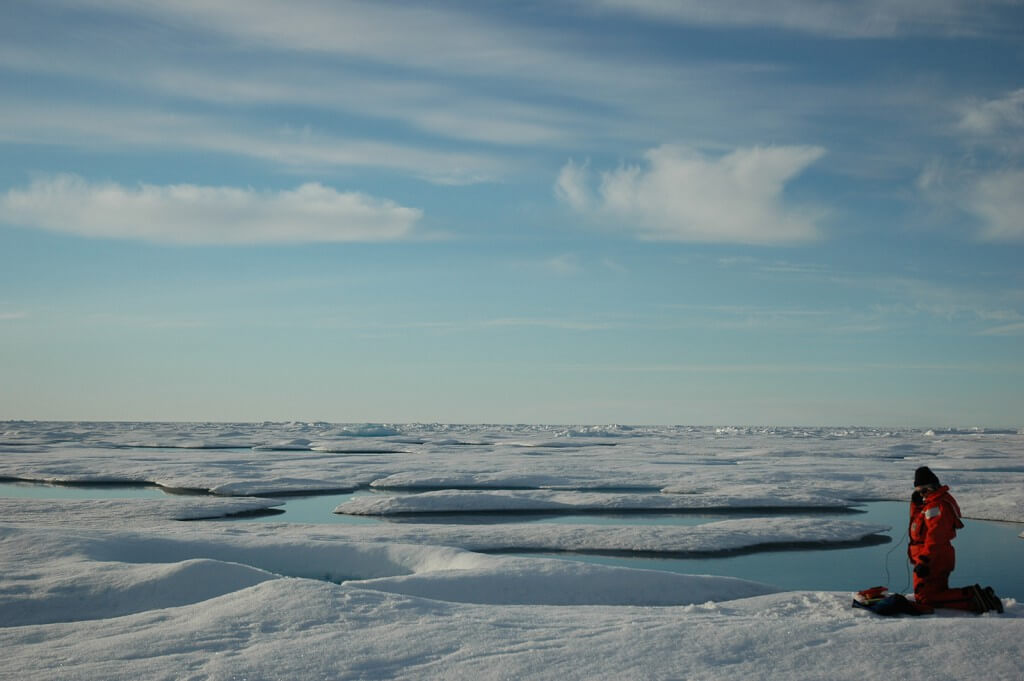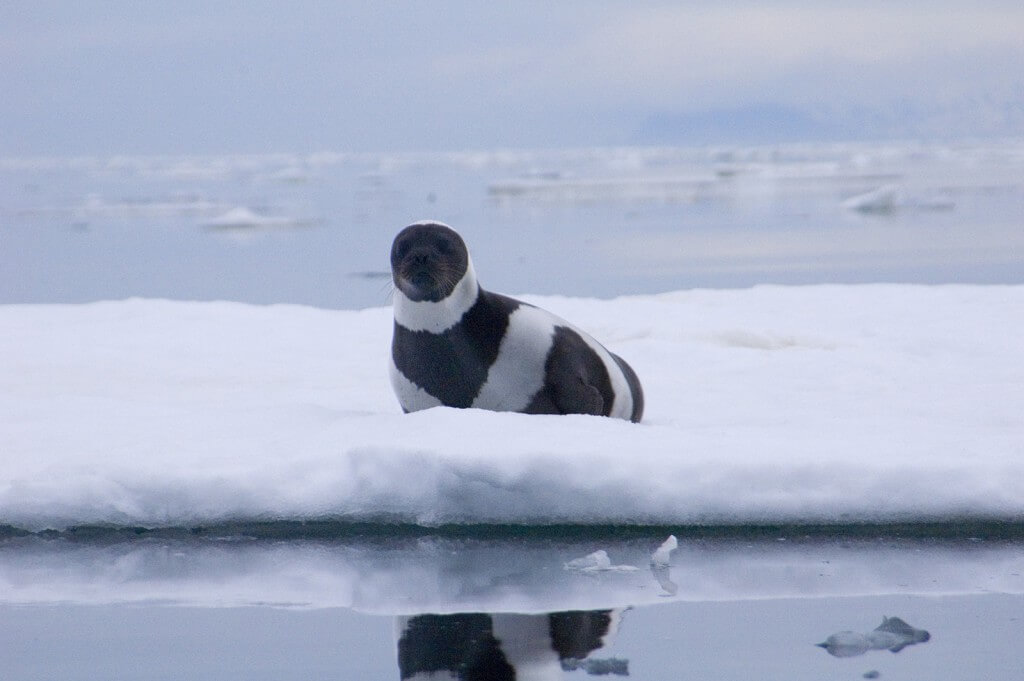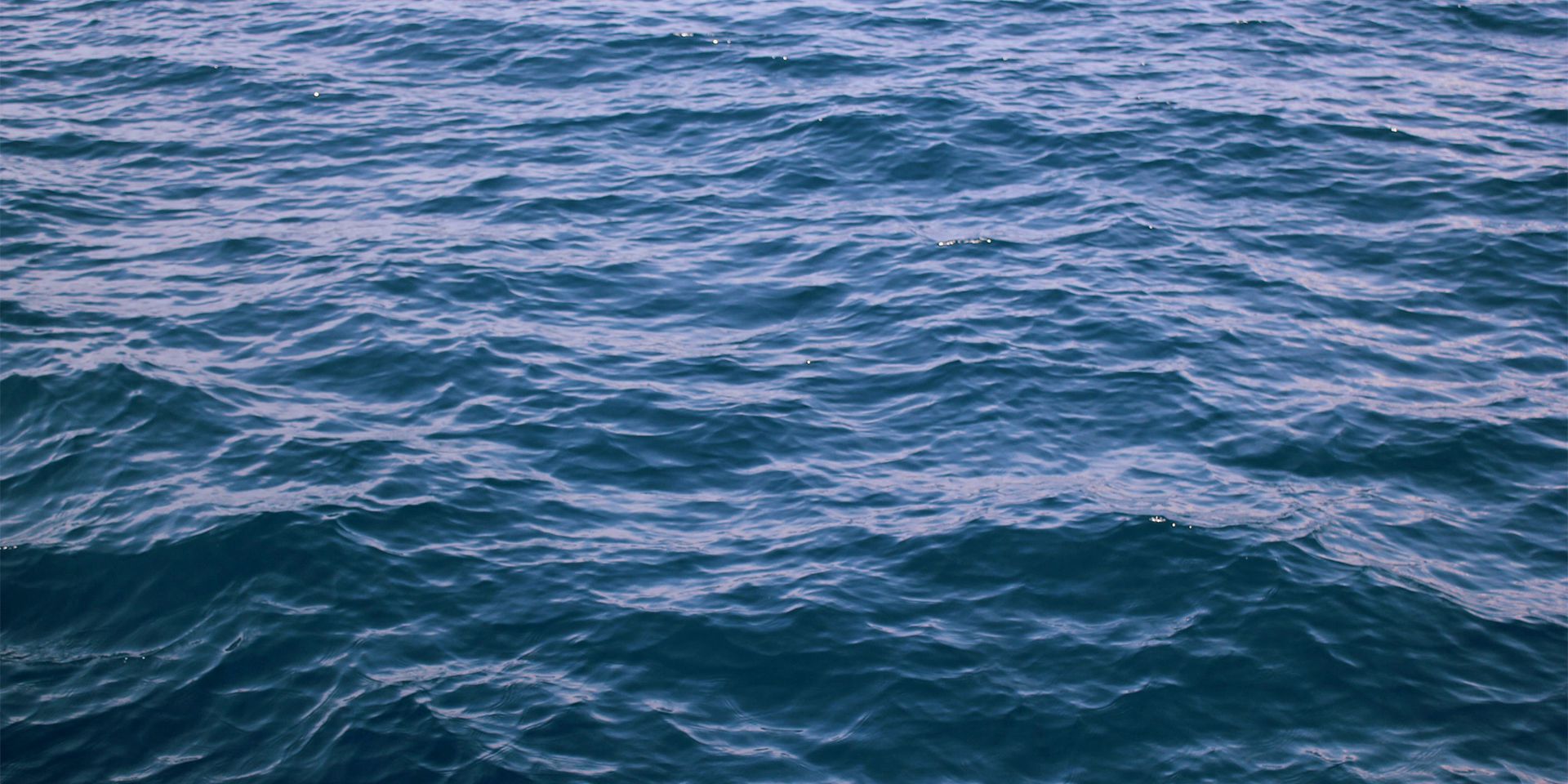Arctic
The Arctic marine environment is changing rapidly. The most obvious indicator of such change is the dramatic reduction of seasonal sea-ice, but many other aspects of Arctic marine ecosystems are being profoundly altered. The impacts of these changing environmental conditions on marine mammals may be exacerbated by the rapid changes in human activity that they make possible (e.g., expansion of shipping and offshore energy exploration, mining, commercial fishing, coastal development and tourism).

Scientist listening for real-time sounds of marine mammals and other marine fauna in the Arctic Ocean, Canada Basin. (Jeremy Potter, NOAA/OAR/OER)
Several species of marine mammals are adapted to Arctic conditions and are therefore bound to lose resilience as those conditions change or disappear. Further, Indigenous communities in the Arctic depend on marine mammals for subsistence and cultural identify. The loss of sea-ice is degrading or eliminating important habitat of marine mammals that use sea-ice and snow cover for foraging, resting, molting, reproduction, and refuge from predators (e.g., polar bears, walruses, ringed and bearded seals). The long-term consequences of climate change for other species, including bowhead and beluga whales and seasonal visitors such as gray whales and humpback whales, are less clear. However, virtually all marine mammals are likely to be affected at least indirectly by the rapid ecosystem-level changes that are underway—as a result of warming temperatures, ocean acidification, longer seasons of open water, and thinner sea-ice.

Ribbon seal hauled out on the ice. (Michael Cameron, NMFS)
The opening of new sea routes across the Arctic and increased Arctic shipping is following decreased seasonal ice cover, bringing risk of oil spills as well as ship strikes and disturbance of marine mammals. Management of offshore oil and gas development in the Arctic, must account for the risk of oil spills and possible energy development impacts arising from the sounds generated by seismic testing and drilling operations, possible chemical contamination, alteration of key habitats, and disturbance from vessel and aircraft support activities. It is critical to develop scientific baseline information on marine mammals and their ecosystems across the Arctic against which to assess future impacts and evaluate the effectiveness of mitigation and response efforts. In this light, the Circumpolar Biodiversity Monitoring program under the Arctic Council’s Conservation of Arctic Fauna and Flora working group published the State of Arctic Marine Biodiversity Report in May 2017, during the final Arctic Council Ministerial under the U.S. Chairmanship. This report, which was updated in 2021, provides detailed baseline information on status and threats to Arctic marine mammals.
Unique among federal agencies, the Commission is also responsible for recommending provisions that ensure the availability of marine mammals for Alaska Native subsistence and cultural purposes. Accordingly, the Marine Mammal Commission has a longstanding commitment to support the assessment of marine mammal stocks and the management of risks to marine mammals and subsistence communities in a changing Arctic.
LEARN MORE
State of Arctic Marine Biodiversity Report, 2020
Arctic Research Plan 2022-2026
Co-Management and Alaska Native Tribal Consultation
For additional information on the Marine Mammal Commission’s efforts in the Arctic, see our 2012 annual report.
